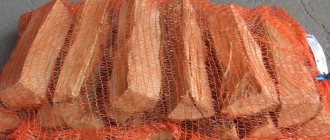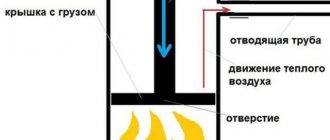In the 19th century, there were no beds in the houses of Russian peasants - only rich people had such furniture. We already know from fairy tales and old films that in those days many people slept on stoves, but everything is not as simple as it seems. After all, there was only one stove in the huts, and families often consisted of three or more people. Where did the rest of the family sleep? Within the framework of this article, I propose to figure out what other sleeping places were available in Russian houses and what strange rules people were forced to follow while sleeping. For example, people went to bed wearing only clothes, because it was important for personal hygiene and protection from terrible superstitions. Also, during sleep, a kind of hierarchy was maintained - some family members could sleep in the most comfortable places, while others were located on hard boards. In general, the topic is quite interesting, so let's start right now.
It is believed that hundreds of years ago people slept on stoves. But it's not that simple
Russian stove for sleeping
The couch on the stove was the most comfortable place to sleep. Firstly, there was enough space for a comfortable sleep. Secondly, it remained warm for a long time, which was especially important during winter frosts. As a rule, elderly grandparents slept on the stove, but sometimes young people also slept there. It was believed that the warmth from a brick bed could cure colds and many other diseases. Therefore, sick family members also took care of her. Out of turn, so to speak.
Stove with bench
Heating a one-room house
Small stove
There are three ways to place a stove in a house where there is only one room and there is not a single wall, even separating the kitchen or hallway.
- If the room is not very large, the fact that free space comes to the fore. A stove, even the smallest one, if placed in the middle, will steal a lot of it. In this case, the heat output will be maximum, there is nothing to say here, but constantly cruising around it is not entirely convenient. This option is suitable only with a spacious room.
- If you place the stove against the wall, there will be more free space. But, you say, in this case one working surface of the wall will work idle, directly heating the wall near which it is located. This is true, and in this case the wall must be protected from overheating using thermal insulation materials. Or place the stove so that there is a small gap between it and the wall, at least 15 centimeters wide. And the wall will be safe, and the warm air circulating in this opening will also work to heat the entire room.
- In very small houses, a stove of a special design is placed in the corner, observing all safety measures. Usually two work surfaces are enough to heat the entire room.
However, we must not forget that real skilled stove makers can even make a small stove in such a way that it can accommodate a stove, an oven and other auxiliary devices. Well, if used correctly, it will heat no worse than a real Russian village stove.
What is polati?
The second most comfortable sleeping place in Russian houses was the so-called polati. These are beds in the form of wooden shelves, located between the wall of the hut and the stove. In addition, this was the name given to the floorings built under the ceiling. It was almost as warm in these places as on the stove. In addition, there were no drafts between the walls and near the ceiling. As a rule, children slept on the floors - old people simply could not climb on them. In addition, under the weight of adults, the poles could fall, but children weigh little and such a risk is minimized.
Stay in a Russian hut
What to consider when choosing a location for the stove
Designing the house
The first and immutable requirement when choosing the location of the stove is the complete design of the house. That is, the location of the stove in the house should be planned simultaneously with the walls. In this case, it will not happen that one room will be unbearably hot, and the other will be bitterly cold. And it’s much easier to pour the foundation under it before the floors are laid.
But there are other rules that should be followed.
- Under no circumstances should the foundation for the stove be connected to a common foundation. Over time, the house will definitely shrink and the least that will happen is that the stove will become covered with cracks, from which wisps of smoke will constantly curl, making it impossible and even dangerous to stay in the room. Well, at most it will simply warp and require a lot of repairs.
- The location must be selected in such a way that the chimney is in close proximity to the internal main wall. It will be possible to support the pipe on the ceiling beam.
- Be sure to take into account the layout of the house. Number of rooms and windows. The need to heat the second floor, if there is one. And the material from which the house is built.
- Next, the approximate heat loss of the entire structure is calculated. From here the heat transfer of all surfaces of the stove is calculated.
- The design of the furnace itself must also be thought out in advance.
- Well, one last thing. If the house is too large and one heating device is not enough, you should calculate how many stoves will need to be installed and in what places.
Many years and even centuries of experience show that building too many chimneys means consuming an increased amount of firewood. There is no need to make a separate stove for each room. This is why it is called an ideal location, because with a minimum of space, the largest possible area is heated.
And one more important fact. A stove, no matter what type of fuel it is heated with, is a device around which some amount of garbage, dirt, ash, soot and other dirty substances always accumulate. Therefore, it is better to make the firebox hole in the room that is closest to the front door. Then you won’t have to carry firewood, buckets and bags of ash across the whole house. Believe me, after these voyages the rooms will definitely have to be cleaned.
Where did the men sleep?
The shelves were located on one side of the Russian stove. On the other was the woman's kut - a space where women went about their business. Usually this part of the house was hidden under a curtain and the appearance of a man in it was regarded as an insult. Opposite the woman's kut there was a corner of the head of the family, where a man could make things and even sleep. In addition to the stove and bed, people could also sleep on bunks - wide benches made of wood. Also, chests and even ordinary bags of flour could be used for sleeping. Where there was space and at least a little comfort, they slept there.
The Red Corner is the most honorable place in the hut, where there was a table and icons
Interesting fact: more or less comfortable places to sleep appeared only in the 1920s. If you believe the statistics, in those days most of the villagers slept on beds, about 40% rested on the floor, about 5% slept on the stove, 3% on the floor and 1% on the planks.
Iron stove in the house
Iron stove
A sweet, kind, blazing hot, red-hot “potbelly stove”. True, modern stylish versions of iron wood-burning stoves no longer fit this name, but its functions have not changed.
Installing an iron stove in a house is much easier than building a brick one, however, its safety requirements are somewhat higher.
- Fire safety. The temperature of the walls of an iron wood-burning stove is several times higher than that of a brick stove. Therefore, care must be taken when handling it.
- It is also necessary to protect the floor and walls near which it is installed from overheating.
- The installation location is calculated taking into account the location of windows and doors in the room. But no closer than 50 cm from the wall, even if it is impregnated with a fire retardant substance and finished with non-flammable materials.
- It is also necessary to equip a place around the stove where firewood, tools and other elements necessary for proper operation will be stored.
Of course, such a stove alone cannot heat a multi-room house, which is why it is used in most cases in small or temporary houses. Although, if you install it in a utility room and connect it to a water heating system, then even a two-story house will be warm.
Why didn't people take off their clothes?
Bed linen did not exist for ordinary people. Instead of a pillow, soft things like a fur coat were usually used. Winter clothes were also used as blankets.
During sleep, residents of wooden houses did not take off their clothes. The fact is that they were forced to sleep on hard bags filled with hay and covered with sheep skins. It goes without saying that such a bed was not clean. People slept in their clothes and, if something happened, they could simply wash them. In addition, there were quite a lot of spiders, bedbugs and ants in the wooden huts. It was very difficult to get rid of them using folk remedies, so people saved themselves with clothes.
People slept in clothes because without them it was uncomfortable and dirty
Don't forget about superstitions. People believed that during sleep, every person is transported to another world, and appearing there naked is very shameful. In addition, a naked person has always been considered vulnerable to evil spirits. But sometimes the girls broke the rules and went to bed naked. So they hoped to see a prophetic dream or talk with evil spirits.
Nuances of the stove design
*
It is advisable to make the outer part of the chimney from sand-lime brick. It is more resistant to moisture and temperature fluctuations. After laying the chimney, fittings that have not yet been installed (cast iron hob, etc.) are installed.
If the goal is simple brickwork, then you can get by with simple cleaning and alignment of the seams. If your plans include decorating a wood-burning stove, you don’t need to pay attention to the joints. Typically, such structures are decorated with heat-resistant ceramic tiles. For example, tiles or clinker.
The first option is preferable from the point of view of heat transfer. The tiles are characterized by a box-shaped back shape, which increases the thermal efficiency of the coating.
Figure 7. Stove lined with tiles
For those who do not want to deal with tiles, but want to somehow decorate the structure, we can recommend painting the stove with heat-resistant paint. You can decorate in a traditional Russian ornamental style.
Between the main structure and the chimney - in the overlap area - a thermal protection device is required. It is made, for example, from basalt panels. It is advisable to use slabs up to 100 mm thick. In extreme cases, you can get by with 50mm ones. But not thinner.
As a masonry mixture, you can use either purchased or home-made mortar. In the latter case, a composition of clay and sand is used. The ratio of components is from 1:1 to 1:2, respectively. The specifics depend on the quality of the clay. The choice of proportion is determined experimentally. Still, it is recommended not to skimp and purchase a ready-made mixture with a verified ratio of components.
How long did people sleep?
As for the duration of sleep, there were many restrictions. Today we know very well that for good health, adults need about 8 hours of sleep. If we don’t get distracted by TV shows and social networks, we can easily afford it. But the peasants worked 15 hours a day and did not have much time to sleep. Usually all family members sat down to dinner and went to bed at sunset. After only 5 hours they were forced to get up to feed livestock, get firewood, and so on.
The peasants simply needed an afternoon nap
Five hours of sleep was not enough for people, so afternoon naps were common. Usually it did not last long, about 2 hours. But this was not even a whim of people, but a tradition. It was believed that without good rest there could be no question of good work. No stove was required for daytime sleep - people could simply lean against a haystack and have a great rest.
If you are interested in science and technology news, subscribe to our channel in Yandex.Zen. There you will find articles that were not published on the site!
There is another article on our website about life hundreds of years ago. In it I talked about the strangest “folk remedies” against various diseases. For example, to treat fractures, people pulled a brick from the back wall of the oven, crushed it and added it to a boiling mixture of vegetable oils. But did it help with the healing of fractures? Read this link.
How to build a Russian stove yourself?
Classic stoves had dimensions of approximately 2000x3000 mm. Modern designs are considered dimensional if they reach a size of 1500x2300 mm. Small structures include structures with a length and width of up to 1800 mm.
There are several types of similar designs. But they all consist of a number of common elements:
- heating stove;
- bed;
- oven;
- hob;
- ash pit.
There may also be a place for utensils and a woodshed. To build a structure, you need to have an ordering diagram. The article discusses in detail the order of masonry. But first you need to take care of the base.
Figure 2. Workflow for constructing a furnace
This is interesting: barbecue oven - types and characteristics.
Foundation structure
The total weight of the structure will be several tons. Such a mass requires the creation of a solid foundation. The base area should be approximately 10-15% larger than the stove base.
The depth of the pit for filling is determined at the rate of 50 mm for every 1000 kg of weight. In our case, we will need an impressive pit.
Remember! The minimum distance of brickwork from the wall is 15 cm
Having retreated the required distance from the wall, they dig a hole, the bottom of which is covered with sand and rubble. Bulk materials are thoroughly compacted. The main depth of the pit is reinforced with steel and filled with concrete. The top of the foundation should be several centimeters below the floor level.
The foundation is allowed to stand for about a month. Cement-sand mixtures crystallize within 4 weeks. The minimum curing period for concrete is 2 weeks. But it’s better not to rush things.
After the composition has completely set, the base is waterproofed. This builds protection against possible penetration of groundwater into the thickness of the furnace. Now you can start laying.
The procedure for laying a stove with a comfortable bench
To build a stove structure, heat-resistant fireclay and/or red bricks, clay and metal fittings (doors, valves) are used.
Figure 3. Order of the stove masonry
*
When laying a stove with a comfortable bench, you must follow the order. It will not be easy for a non-specialist to understand the jungle of the diagram, so each row is illustrated separately.
Recommendation! If you do not have a professional background as a stove-maker or bricklayer, use the level more often. Achieve strict horizontal and vertical masonry.
- Lay out the first row. This is the most critical stage, on which the quality of the rest of the masonry depends.
- It works the same way.
- The blower door is mounted on this row. It must be taken into account that when heated, metal fittings will increase in volume. Therefore, it is necessary to install the door, avoiding touching it end to end. Typically, strips of asbestos are placed between the stove dampers and the masonry to compensate for expansion.
- Here the schematic laying continues in the same vein as in the previous row. The brick turns out to be “flush” with the fittings.
- Here they start laying the firebox. For this reason, the chamber is reinforced with a lining - it can be seen in the illustration by its different shade. The channel arrangement starts. Install 3 doors for cleaning chambers. The blower damper is completely covered with brick.
- The row duplicates the previous one. The fittings are completely covered with fire-resistant ceramics. The grate is also placed here. Be sure to monitor the brick dressing.
- Arrange caps (vertical channels). The firebox is reinforced with heat-resistant material. Install the firebox door.
- The installation of caps and linings continues. Lifting and lowering “passages” are formed.
* - The row duplicates the previous one.
- The row duplicates the previous ones. The caps are already almost 100% laid out here. The lining layer is still being formed.
- The firebox damper is completely covered with masonry. 4 suction channels are installed. The first is carried out from the firebox - into the lifting one, a pair - between the caps. Since the formation of the boundary between the firebox chamber and the chimney (hail) begins here, the fourth channel is made from it - into the side hood.
- In general, the 11th row is being duplicated. The caps are already completely done. Other elements in the process of formation. The lining at this stage tapers into a dome-shaped structure.
- Fireproof reinforcement of the firebox is completed. The firebox and caps are also completed.
- The formation of the overlap continues. At this stage, it is especially important to control the vertical and horizontal, while not forgetting to correctly tie the masonry.
- The formation of the channel continues, which is clearly visible in the illustration. One of the features of this wood-burning structure is the presence of an original side designed for filling with sand. This is not necessary, but warm sand increases the healing properties of the bed. Installing the side does not require much effort, so it is recommended not to abandon it - it will most likely come in handy during the operation of the stove.
- From this to the twentieth rows form a smoke exhaust channel and a protective wall. Despite the lightness of the “extension”, you should carefully monitor the quality of the dressing.
- The next step is to install the stove damper on the smoke exhaust duct.
- This row ends the laying of the protective wall. The chimney damper is completely closed.
- The chimney is laid out from this row to the end. After this, the stove is ready. Despite the intricacy of the design, such a stove with a stove bench can be made with your own hands even by a person far from the stove business.
Figure 4. Finished stove
Recommendation! However, despite the step-by-step instructions, it is better to consult a professional. An experienced stove maker will be able to take into account the individual characteristics of the house and advise on the optimal layout of the structure.
This is interesting - we make a simple brick oven with our own hands.











